You will not find a better tool for flattening pieces of wood than a jointer. Although you could flatten wood with a variety of other tools – a handheld sander, for example – jointers are much more efficient and can save you plenty of time and perhaps even money.
If you are well-aware of the benefits of jointers and happen to be looking for one, then our post may interest you.
There are plenty of joint sanders out there, and while variety is great since you have more options, it can be very confusing for newbies.
Well, we’ve done the hard part and have selected what we think are the 5 best jointers for the money out there. And to help you choose the right tool, we’ll now have a look at the special features of each of the shortlisted jointers.






Useful article: How To Properly Use A Jointer
5 Best Jointers For The Money Reviews!
1. PORTER-CABLE PC160JT 6-Inch Benchtop Jointer.
Finally, we have PORTER-CABLE’s PC160JT benchtop jointer, which is very similar to the CRAFTSMAN unit in terms of features and price.
In fact, as far as we can tell, there are no major differences between the two jointers – both should be good for the same types of jobs. If in doubt, then choose the more trusted brand (though both brands are reputable), or maybe choose the unit that’s cheaper at the moment.
Just to recap the numbers, know that the PC160JT has a two-knife cutterhead, RPM that can be adjusted from 6,000 to 11,000, 6 x 1/8 inches of cutting capacity (W x D), and a 19-3/4-inch fence with a 45-degree tilt. This jointer is also sized very similar to the CRAFTSMAN unit, so both should be equally easy to move around.
And again, PORTER-CABLE PC160JT would be a good option if your jobs are low-volume and do not require a very smooth finish.
Pros
- Variable motor RPM.
- Compact and portable.
Cons
- Low cutting capacity.
- Delicate blades.
2. Cutech 40160H-CT 6-Inch Benchtop Jointer.
If you are looking for a not-too-expensive jointer that can tackle high-volume jobs, then Cutech’s 40160H-CT benchtop jointer may be the right option.
Even though this is a fairly affordable jointer, it boasts remarkable cutting performance. This is mainly thanks to the spiral cutterhead with 12 two-sided high-speed steel (HSS) inserts.
Thanks to the cutterhead, the 40160H-CT jointer goes through wood pretty quickly and leaves a smooth finish. Not only that, but the spiral cutter head is fairly easy to maintain.
The overall table length here is 30 inches, and this jointer can take up to 6-inch wide pieces of wood. Aside from that, its outfeed table can be adjusted to make up to 1/8-inch deep cuts.
To allow for more accurate cuts, the 40160H-CT benchtop jointer has a side fence sized at 19-3/4 x 4-1/4 inches (L x H), For extra flexibility, the fence can be angled to 135 degrees to allow you to make bevel cuts.
Remarkably, this jointer also has a 2-1/2-inch dust port for more convenient debris evacuation.
But perhaps the most eye-catching feature of this jointer is its tabletop design. Compact and weighing just 40 pounds, this unit is very easy to move around, which may be a big benefit for some people.
Pros
- Not too expensive.
- Great milling performance for the money.
- Compact and portable.
Cons
- The fence is not sturdy and does not stay square to the table.
3. Powermatic 54HH (1791317K) 6-Inch Jointer.
If you are ready to spend the money on a heavy-duty jointer, then have a look at the 54HH jointer by Powermatic. This jointer is priced quite steeply, but it does have a few goodies that may interest you.
First and foremost, expect the cutting performance of the 54HH jointer to be fast and extremely smooth thanks to the helical cutterhead with 40 four-sided carbide inserts. Not only do these inserts allow for very quick cutting, but they are also very durable and can live for a long time because you have 4 sides to work with.
The Powermatic 54HH jointer can also take very long pieces of wood thanks to its 31-1/2 inches long infeed and outfeed tables. The 38 x 4-3/4-inch (L x H) fence is there as well to help you guide the workpiece through the cutterhead.
Capacity-wise, the 54HH jointer can take up to 6 inches wide pieces of wood, and it can make up to 1/2 of an inch deep cuts. The fence here can also be angled 45 degrees to the right or left to make bevel cuts, as well as be fixed in the default 90-degree position.
Notably, this jointer can be run on either 115V or 230V, though it comes prewired for 115V. And to allow you to easily dispose of debris, 54HH features a 4-inch dust port.
Being a closed-stand unit, this jointer is bulky and isn’t easy to move around. With that said, if you do need quick cutting performance for high-volume jobs, the 54HH jointer is very hard to beat.
Pros
- Cuts very quickly and smoothly.
- Durable carbide knives.
- Large working surface.
- The fence can be angled 45 degrees to the left AND right.
- Runs on 115/230V.
Cons
- Very expensive.
- Bulky and difficult to move around.
4. JET JJ-6HHDX 6-Inch Long-Bed Jointer.
If you don’t quite need the cutting capacity of the Powermatic 54HH jointer, then maybe JET’s JJ-6HHDX jointer will be a better option for you. This jointer is no less heavy-duty, but it’s not quite as capable as Powermatic’s unit.
The helical cutterhead here “only” has 27 four-sided carbide inserts. And even though it will not be able to cut through wood as quickly and smoothly as the Powermatic jointer, it will still deliver excellent cutting performance and blade durability.
The working surface here is slightly smaller as well. The infeed and outfeed tables are sized at 27 and 27-3/8 inches of length respectively, and the fence is also shorter at 32-3/4 x 3-7/8 inches (L x H). This still is plenty, but for large pieces of wood, the Powermatic 54HH jointer may be a bit better.
In terms of wood capacity though, the two jointers are identical – the JJ-6HHDX can again take up to 6 inches wide pieces and make up to 1/2 inches deep cuts. The fence can likewise be placed upright or tilted to the right or left.
What may also matter to you is that the JET JJ-6HHDX jointer can again run on either 115V or 230V, and it has a 4-inch dust port as well.
All in all, the JJ-6HHDX jointer is also a very high-performance unit, but it’s not quite like the Powermatic 54HH jointer. If you need a heavy-duty jointer but the 54HH seems overkill for you, then go for JET’s JJ-6HHDX jointer.
Pros
- Cuts quickly and accurately.
- Durable carbide knives.
- Quite a large working surface.
- The fence angles 45 degrees to the right & left.
- Runs at either 115 or 230V.
Cons
- Very expensive.
- Poor mobility.
5. CRAFTSMAN CMEW020 6-Inch Benchtop Jointer.
If you will not be jointing wood too often, then an inexpensive unit like CRAFTSMAN’s CMEW020 benchtop jointer may be just right for you. This jointer is far from being as capable as the already overviewed jointers, but that may be alright for you depending on your needs.
The cutterhead here has just two knives, which will be adequate for occasional wood cutting, but this will certainly not be sufficient for regular jointing. The two knives will be cutting relatively slowly, and the resulting finish may not be very smooth.
What may allow you to somewhat compensate for the low speed of this jointer is the motor speed adjustable from 6,000 to 11,000 RPM. Aside from that, the adjustable motor speed may allow you to gain more control over the jointing process.
In terms of size, the CMEW020 jointer is very close to the Cutech 40160H-CT jointer reviewed at the very beginning. It’s also 30 inches long, and it has a 19-3/4 inches long fence that can tilt 45 degrees. Likewise, being a tabletop unit and weighing 35 pounds, the CMEW020 jointer is very easy to move around.
The cutting capacity is also identical – 6 inches wide and 1/8 inches deep. And to allow you to more conveniently dispose of debris, this jointer has a dust port for sawdust extraction.
In the end, if your jointing jobs do not require high speed or smoothness, then the CMEW020 jointer may be just right for you.
Pros
- Variable motor speed.
- Compact and portable.
Cons
- Low cutting capacity.
- Short blade lifetime.
Things To Look For In The Best Jointer For The Money
Now, how do you know which unit is the best jointer for your money? Well, below, let’s talk about the things that you should be paying attention to when shopping for a jointer.
Closed-stand vs open-stand vs benchtop jointers
Jointers can be of three major types – closed-stand, open-stand, and benchtop. Here are the pros and cons of each jointer type:
- Closed-stand jointers. These jointers have enclosed bases that house the motor. Since the motor compartment is enclosed, closed-stand jointers tend to be quieter, and their motors usually work longer since they are protected from dust and debris.
On the other hand, closed-stand jointers tend to be heavy and expensive, so they may not be the right option for some people.
- Open-stand jointers. These jointers are more portable, lighter, and less expensive than closed-stand jointers. With that said, since the motor is exposed, open-stand jointers are louder, produce more vibrations since there is no metal body to absorb them, and their motors live shorter.
- Benchtop jointers. Benchtop jointers tend to be the cheapest among the three types. These jointers are light, portable, and are great for jobs where mobility is important.
On the other hand, benchtop jointers tend to have weaker motors and smaller tables.
If you know what you need, you should be able to fairly easily identify the right jointer type for your job.
Cutterhead type
Jointers use a rotating shaft with knife blades on it to cut through wood. This shaft is called “cutterhead”, and what should be kept in mind with cutterheads is their type.
There are three main types of jointer cutterheads:
- Straight cutterheads. These cutterheads have straight knives attached to them. Even though straight cutterheads can do a decent job of cutting through wood, they get dull very quickly, leave a rough finish on the wood, and are difficult to maintain.
Inexpensive jointers usually have straight cutterheads with a varying number of knives. Due to their characteristics, straight cutterheads are more suitable for low-volume jobs where finish quality is secondary.
- Spiral cutterheads. Inspiral cutterheads, the knives are arranged throughout the surface of the cutterhead in a spiral pattern. Such a pattern allows the jointer to achieve smoother cuts in tougher woods and even when going against the grain.
Spiral cutterheads usually have a few dozen knives, which allows for fast and smooth flattening of the wood. Besides, spiral cutterhead knives usually have two or four edges.
For high-volume jobs requiring a smooth finish, spiral cutterheads are going to be far better than straight ones.
- Helical cutterheads. Helical cutterheads have the knives arranged in a similar fashion to spiral cutterheads, but the blades approach the wood at a slight angle. This small difference allows helical cutterheads to stay sharp for a longer time and produce smoother results on difficult grains.
Like spiral cutterheads, helical cutterheads are great for high-volume jobs that require smoothness.
Number of knives
The number of knives on the cutterhead can vary. The cheapest jointers will have just 2-3 knives, while pricey jointers like Powermatic 54HH have 40 blades.
The higher the number of blades, the easier it will be for you to go through the wood, and the smoother the finish will be. With that said, keep in mind that 40 straight knives aren’t the same as 40 helical knives.
Knife material
Cutterhead knives are typically made from steel, which is a fairly durable material that probably will not have issues with any kind of wood.
With that said, steel knives aren’t the strongest out there – there also are carbide knives that go through hardwood much more easily and live longer than steel knives.
For high-volume use, carbide knives would be ideal. Otherwise, if you will only be flattening wood just occasionally, then steel knives will suffice.
Number of knife sides
Pay attention to the number of cutting sides in the knives as well. If the knife has more than one side, then you can rotate the knife once its current edge wears out and use the untouched and sharp edges.
Some knives may have only one edge, others will have 2, while a few cutterheads will come with 4-sided knives. Needless to say, the higher the number of sides, the longer you will be able to use the blades without replacement.
Wood capacity
The size of the wood that a jointer can take is also very important. Most often, when talking about wood capacity, jointer manufacturers imply the maximum width of the wood. This spec is also called the bed width, with the bed being the tabletop surface that you guide the wood along.
If you know that your pieces get no wider than, say, 6 inches, then you will know that you will need a jointer that can take no less than those 6 inches. But if in doubt, know that for most home or workshop uses, 6-8 inches of capacity will be more than enough.
Depth of cut
Pay attention to the max cut depth of the jointer as well.
Generally, the deeper, the better because you will be able to do fewer passes to shave off the desired amount of wood. But with a shallower depth of cut, you’ll still be able to shave off plenty of wood, but you will need to do more passes.
With this in mind, for high-volume jobs, a deeper cut would be better since you would need to do fewer passes to process the wood.
Bed length
The longer the bed in the jointer, the easier it will be for you to keep the wood stable.
Generally, the longer, the better, but you should keep in mind two things – the size of your wood pieces and available space. As a rule of thumb, your pieces of wood should be no longer than double the length of the jointer bed.
Fence size & adjustability
The size of the fence is also important. If you will be working with larger pieces of wood, then you may want to get a jointer that has a longer and taller fence.
If you will be processing beveled pieces of wood, they also look for a fence that can be adjusted 45 degrees either to the right or left or both.
Final Words
Hopefully, we’ve given you a good idea of what you should be expecting from jointers.
Be sure to understand your needs – as you could have noticed from the reviews, jointers can be very different. You don’t want to spend a fortune on a jointer that is overkill for you, and you likewise don’t want to wrongly pick a jointer that is insufficient for your projects.
Each of the listed jointers is great in its own way, but which one will be the best for you will depend on what you expect.
More articles: Best Log Splitters For The Money
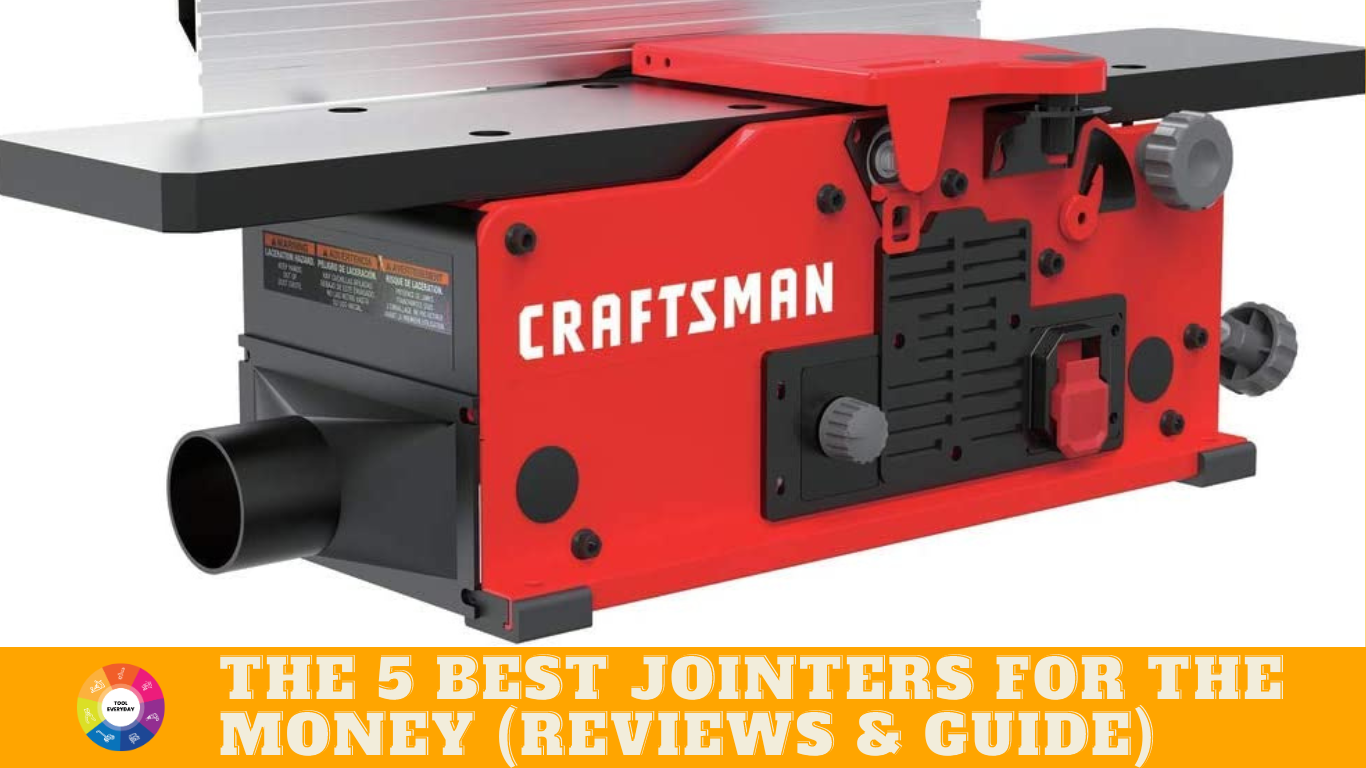
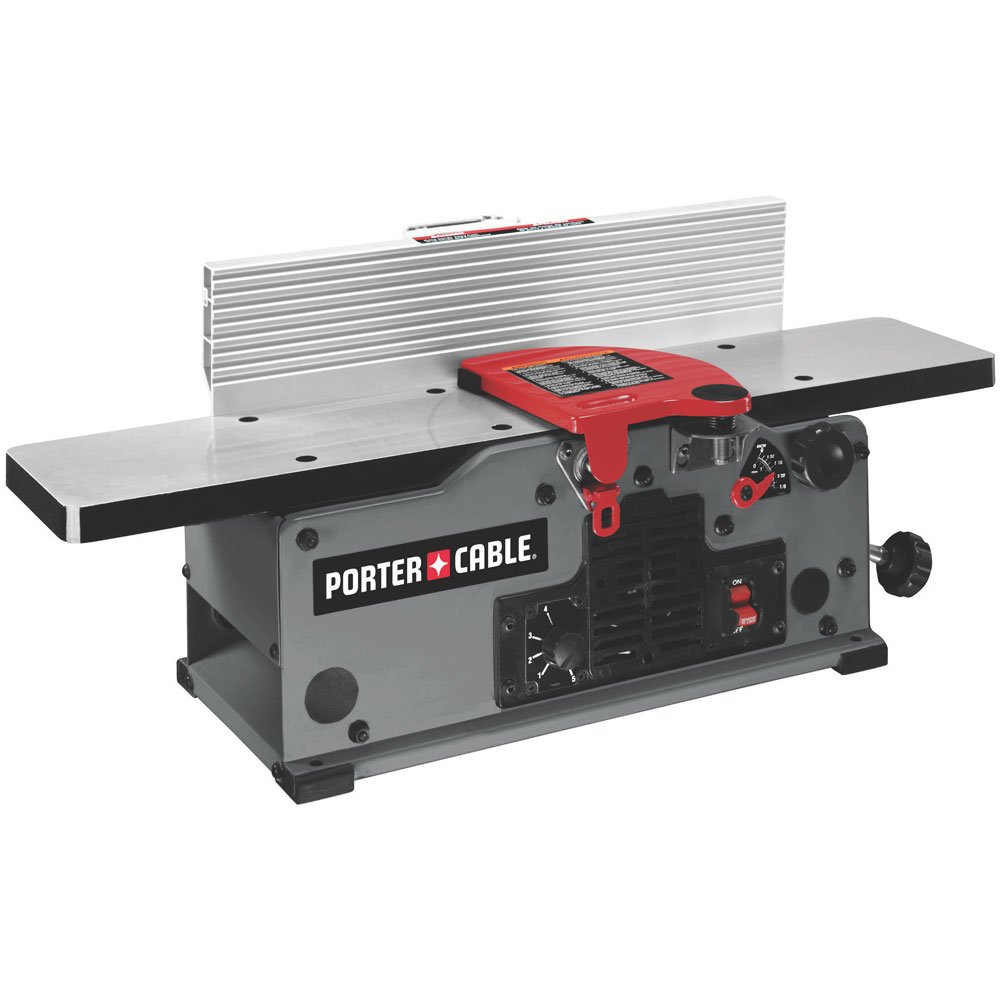
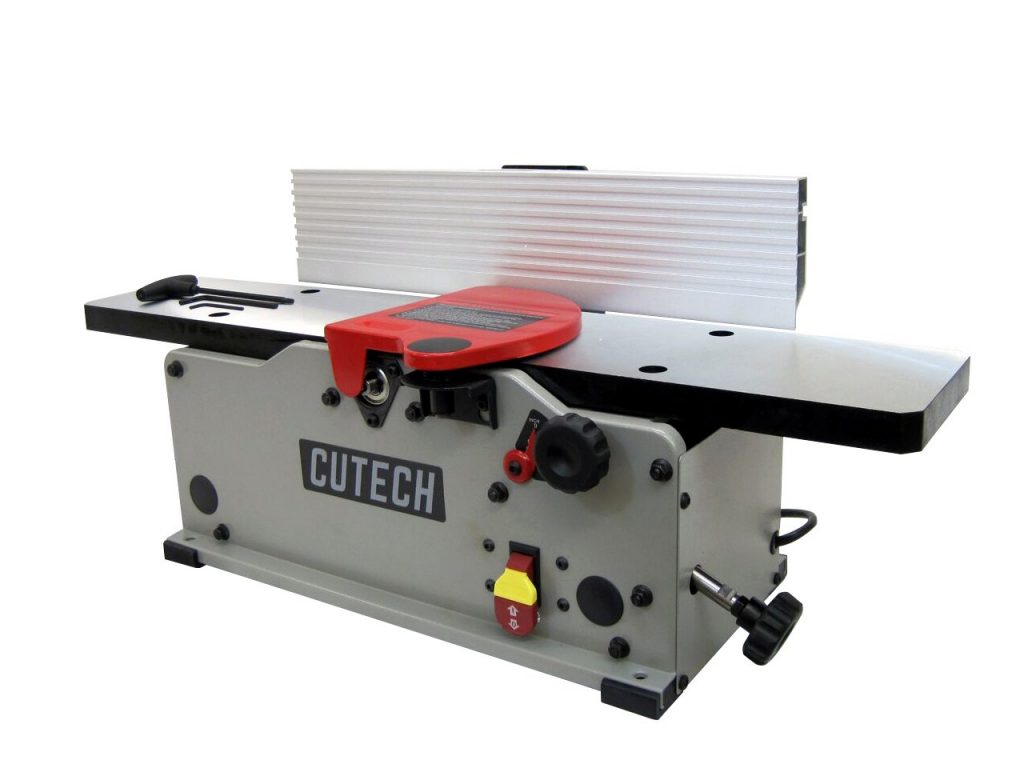
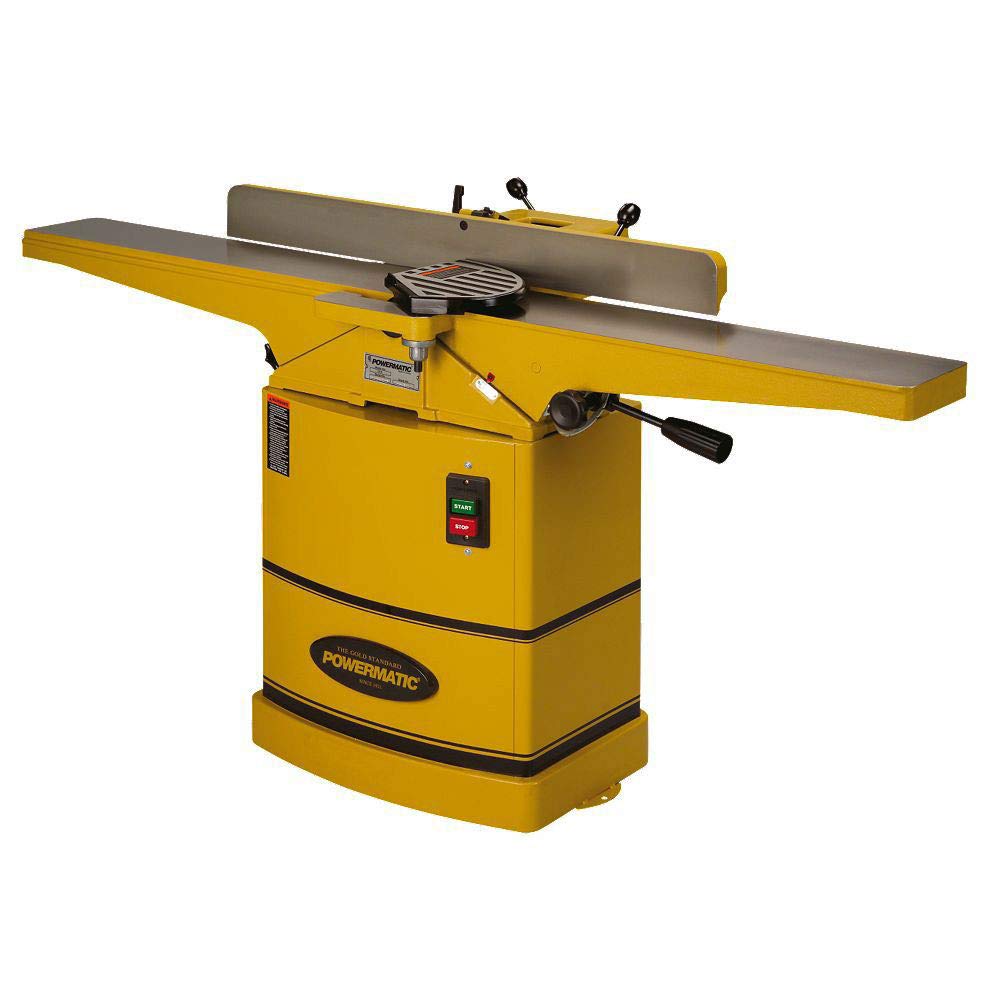
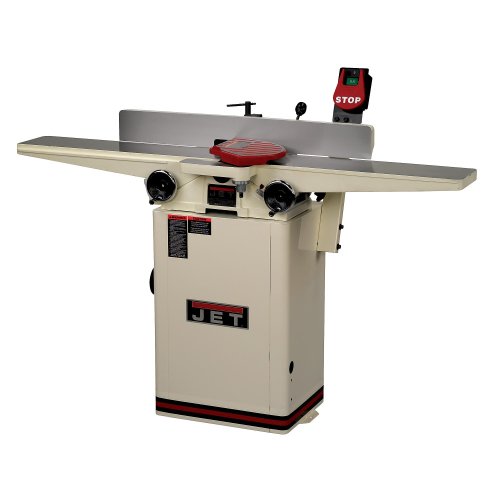
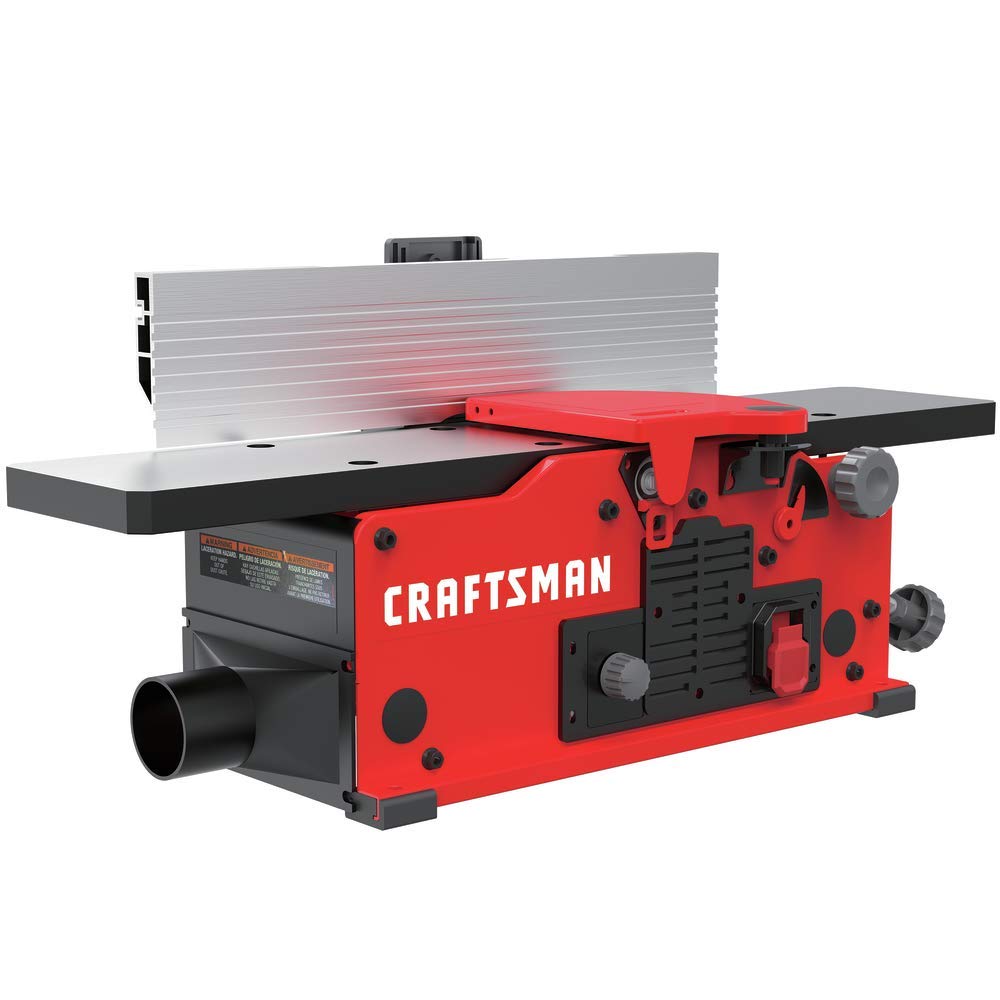
1 thought on “The 5 Best Jointers For The Money (Reviews & Guide)”
Comments are closed.